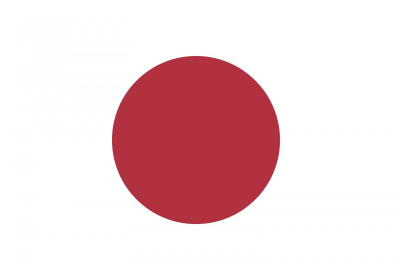The Mitsubishi A6M "Zero" is a long-range carrier-based fighter aircraft formerly manufactured by Mitsubishi Aircraft Company, a part of Mitsubishi Heavy Industries, and was operated by the Imperial Japanese Navy from 1940 to 1945. The A6M was designated as the Mitsubishi Navy Type 0 carrier fighter (, rei-shiki-kanj-sentki), or the Mitsubishi A6M Rei-sen. The A6M was usually referred to by its pilots as the Reisen (, zero fighter), "0" being the last digit of the imperial year 2600 (1940) when it entered service with the Imperial Navy. The official Allied reporting name was "Zeke", although the name "Zero" (from Type 0) was used colloquially as well.
The Zero is considered to have been the most capable carrier-based fighter in the world when it was introduced early in World War II, combining excellent maneuverability and very long range. The Imperial Japanese Navy Air Service (IJNAS) also frequently used it as a land-based fighter.
In early combat operations, the Zero gained a reputation as a dogfighter, achieving an outstanding kill ratio of 12 to 1, but by mid-1942 a combination of new tactics and the introduction of better equipment enabled Allied pilots to engage the Zero on generally equal terms. By 1943, the Zero was less effective against newer Allied fighters due to design limitations. It lacked hydraulic boosting for its ailerons and rudder, rendering it extremely difficult to maneuver at high speeds. By 1944, with Allied fighters approaching the A6M levels of maneuverability and consistently exceeding its firepower, armor, and speed, the A6M had largely become outdated as a fighter aircraft. However, as design delays and production difficulties hampered the introduction of newer Japanese aircraft models, the Zero continued to serve in a front-line role until the end of the war in the Pacific. During the final phases, it was also adapted for use in kamikaze operations. Japan produced more Zeros than any other model of combat aircraft during the war.
The Empire of Japan was a historical nation-state and great power that existed from the Meiji Restoration in 1868 until the enactment of the post-World War II 1947 constitution and subsequent formation of modern Japan. It encompassed the Japanese archipelago and several colonies, protectorates, mandates, and other territories.
Under the slogans of fukoku kyōhei and shokusan kōgyō, Japan underwent a period of industrialization and militarization, the Meiji Restoration being the fastest modernisation of any country to date, all of these aspects contributed to Japan's emergence as a great power and the establishment of a colonial empire following the First Sino-Japanese War, the Boxer Rebellion, the Russo-Japanese War, and World War I. Economic and political turmoil in the 1920s, including the Great Depression, led to the rise of militarism, nationalism and totalitarianism as embodied in the Showa Statism ideology, eventually culminating in Japan's membership in the Axis alliance and the conquest of a large part of the Asia-Pacific in World War II.Japan's armed forces initially achieved large-scale military successes during the Second Sino-Japanese War (1937–1945) and the Pacific War. However, starting from 1942, particularly after the Battles of Midway and Guadalcanal, Japan was forced to adopt a defensive stance, and the American island hopping campaign meant that Japan was slowly losing all of the territory it had gained, and eventually, the Americans captured Iwo Jima and Okinawa Island, leaving the Japanese mainland completely unprotected. The U.S. forces had planned an invasion, but Japan surrendered following the atomic bombings of Hiroshima and Nagasaki and the nearly simultaneous Soviet declaration of war on August 9, 1945, and subsequent invasion of Manchuria and other territories. The Pacific War officially came to a close on September 2, 1945. A period of occupation by the Allies followed. In 1947, with American involvement, a new constitution was enacted, officially bringing the Empire of Japan to an end, and Japan's Imperial Army was replaced with the Japan Self-Defense Forces. Occupation and reconstruction continued until 1952, eventually forming the current constitutional monarchy known as Japan.
The Empire of Japan had three emperors, although it came to an end partway through Shōwa's reign. The emperors were given posthumous names, and the emperors are as follows: Meiji, Taisho, and Shōwa.

1941Dec, 12
World War II: Fifty-four Japanese A6M Zero fighters raid Batangas Field, Philippines. Jesús Villamor and four Filipino fighter pilots fend them off; César Basa is killed.
Choose Another Date
Events on 1941
- 17Mar
Franklin D. Roosevelt
In Washington, D.C., the National Gallery of Art is officially opened by President Franklin D. Roosevelt. - 26Jul
French Indochina
World War II: In response to the Japanese occupation of French Indochina, US President Franklin D. Roosevelt orders the seizure of all Japanese assets in the United States. - 17Sep
Great Patriotic War
World War II: A decree of the Soviet State Committee of Defense, restoring Vsevobuch in the face of the Great Patriotic War, is issued. - 12Dec
Hungary
World War II: The United Kingdom declares war on Bulgaria. Hungary and Romania declare war on the United States. India declares war on Japan. - 14Dec
Thailand
World War II: Japan signs a treaty of alliance with Thailand.

 English
English  español
español  français
français  português
português  русский
русский  العربية
العربية  简体中文
简体中文 